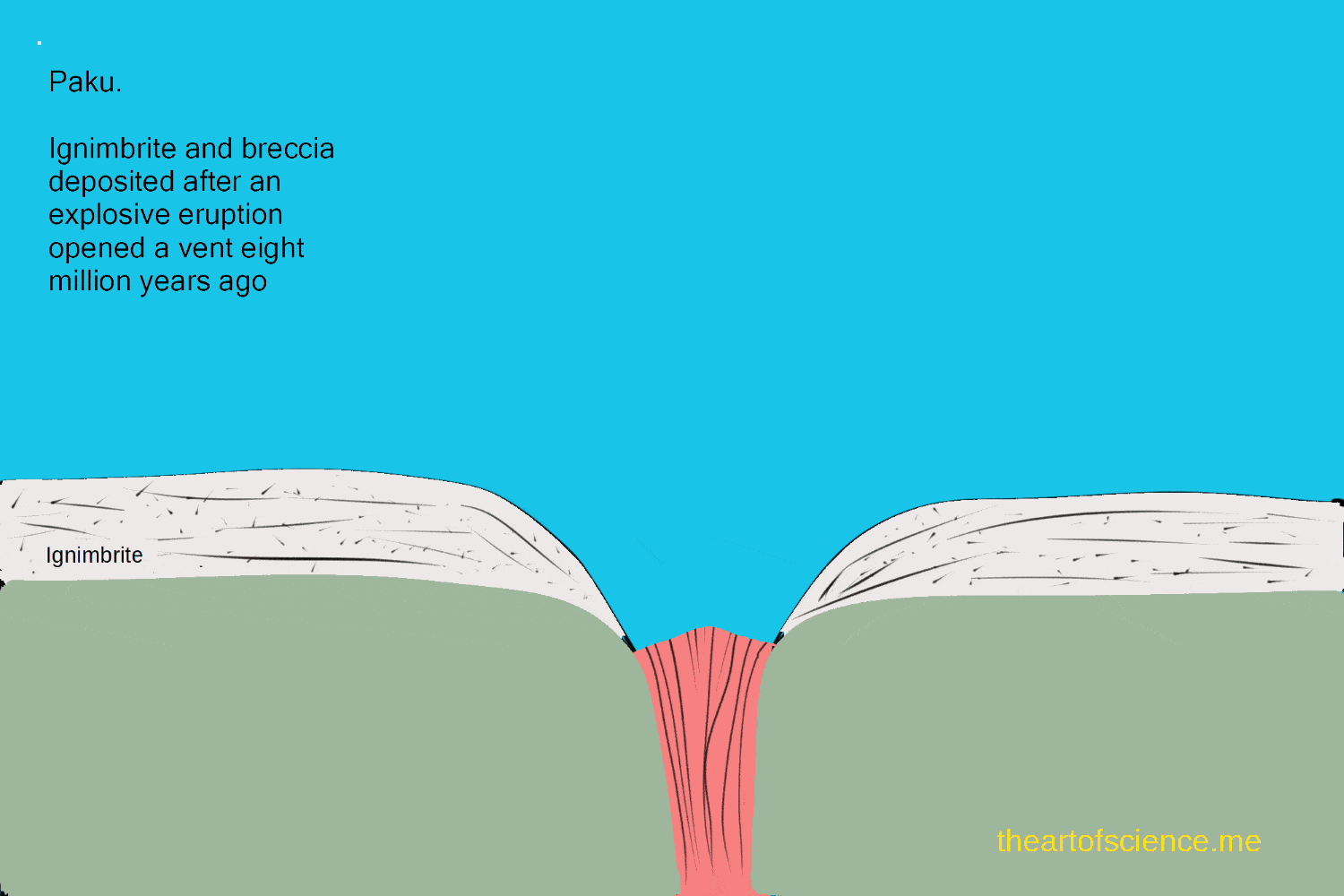Paku on the Coromandel
Paku at the Mouth of Tairua Harbour.
The story of Paku involves an eight million year building project. It started with two crustal plates grinding relentlessly past each other.
Chapter one opens eight million years ago, with an explosive eruption that blew pumice and ash from a fissure, leaving a vent surrounded by ignimbrite and breccia.
Chapter two begins with rhyolite lava squeezing through the fissure into the surrounding ignimbrite, building a rhyolite dome.
Two massive crustal plates locked in an eight million year slow-motion collision generate large quantities of energy. In chapter three of Paku history, a violent eruption cleared the vent and rhyolite lava was free to flow over existing structures. A new dome forms, crowning the original. Towards the end of the chapter, the sticky lava mess cools and solidifies. Eventually, the lava in the fissure solidifies, plugging the vent ending a violent period of history.
Chapter four tells the story of global warming. It lasts 20,000 years, taking us to the present day.
Chapter five begins with another round of global warming. The ending lies in an uncertain future as we attempt to halt its progress.













